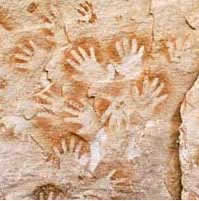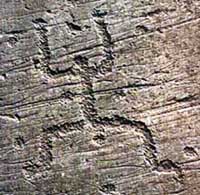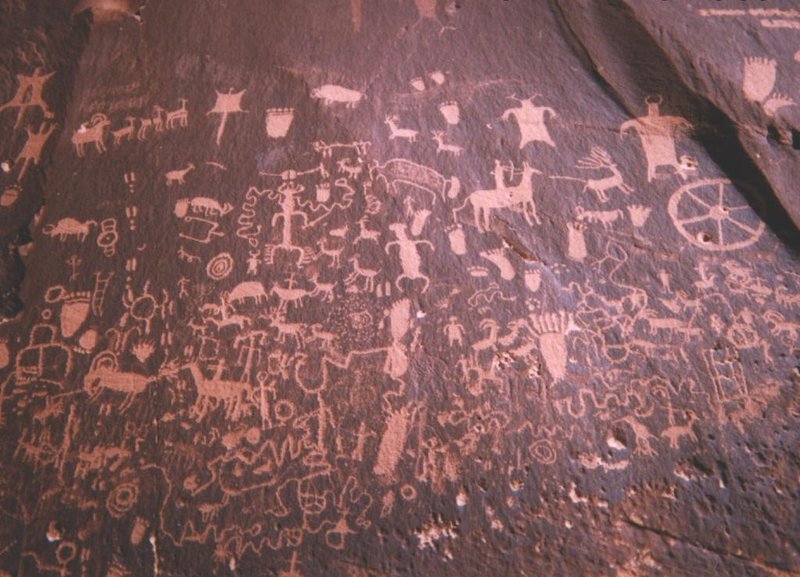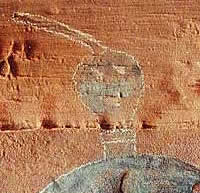|
|
Instructions
Procure a camera. I suggest a good quality, $3,000 DSLR—but, in lieu of that, anything that will take pictures :) You can check out decent cameras through ITS, use a cell phone, a disposable model, or a simple point-and-shoot.
Now create a single-page, photographic portrait of yourself in a visual culture.
Recommended: pick a day to do most of your photography. From the moment you wake up and until you go to bed, take a picture of everything in your daily path which is in some way visual—anything and everything that is meant to be seen or relies on sight.

- What actions or interactions throughout the day are based on, or require, seeing?
- What "wants" to be seen?
- What demands to be seen, pushing its way into your line of sight?
- What is there but is visually hidden or hard to see?
- What is visible but should be hidden?
- What is looked at, looked into, looked around, looked down to or looked up to?
- What hurts to look at?
- What gives you pleasure to look at?
- What, among the things you look at, represent YOU?
YOU WANT TO CREATE a work of graphic art which records the visible world as it appears to you every day, every hour, every minute.
TRY TO MAKE EVIDENT, implicitly or explicity, a thesis about your material—some central, over-arching point about the experience.
PUT IT ALL TOGETHER as a .pdf, Word, Photoshop, Power Point, or other document.
DESIGN IS FLEXIBLE; be imaginative while also observing the basic principles of visual design. Your piece can be linear, spacial, collaged, or other.
FEEL FREE TO USE "PLAIN" photos as well as photos which have been "shopped": enhanced or otherwise altered digitally through such software as Photoshop.
MAKE THIS PIECE VERBAL-VISUAL. That is, it should include both writing and images: aprx. 30% writing, 70% images. Words can accompany the pictures in various ways, can be off-set from the pictures in their own segment of the composition, or can be part of the images themselves. See our McCloud text, pp. 152-161 for ideas on how to combine words and images (he's talking about comics, but you can apply his categories to your own work with the self-profile).
TRY TO INTEGRATE ideas from any and all of your Mirzoeff readings.
POST A DRAFT AND A FINAL VERSION in our Bb Drop Box. Draft due: Jan. 26/27. Finish version due: Feb. 2/3.
 To get prepped for this project:
To get prepped for this project:
-
read this piece on portraiture from the National Gallery of Art;
-
explore this page and its many links from the Smithsonian National Portrait Gallery;
-
read all current or new Power Point presentations, as well as their weekly updates;
-
read all current textbook assignments.
Your aim is to
a) create a piece of art to be displayed in public,
and
b) make a statement about who you are in relation to the visual culture you live in and/or a statement about how "the torrent" of images in your daily world looks and feels.
This is a very open project, especially in terms of design. Use your imagination.
Audience
 This is for yourself as well as for anyone interested art, visual media, and self-portraiture. Imagine that your final product will be on display in the NDSU Union Gallery, or the Plains Art Museum downtown, or The Spectrum, or The High Plains Reader, or Nichole's (a great pastry shop in Fargo which displays local art), and so on. Your audience is intellectually curious, well-read, and well-aquainted with the fine arts. They may also have some background in media studies or rhetoric, and are very curious about the world generally. You'll need to create something original, illuminating, rich and moving to impress this audience.
This is for yourself as well as for anyone interested art, visual media, and self-portraiture. Imagine that your final product will be on display in the NDSU Union Gallery, or the Plains Art Museum downtown, or The Spectrum, or The High Plains Reader, or Nichole's (a great pastry shop in Fargo which displays local art), and so on. Your audience is intellectually curious, well-read, and well-aquainted with the fine arts. They may also have some background in media studies or rhetoric, and are very curious about the world generally. You'll need to create something original, illuminating, rich and moving to impress this audience.
Purpose of the Assignment
- I want you to "slow down the media torrent" a bit by actually noticing it.
- I want you to observe exactly how much of your world is visual (as opposed to aural, olifactory, tasted, or felt on the skin).
- I want you to warm up your imagination, analytical skills, and powers of observation.
- I want you to practice your design skills.
- I want you to you gain some appreciation for the art of portraiture and its possibilities. (Note: it's interesting to consider that EVERYTHING in our increasingly visual culture might be a "self portrait"—images that collectively say something about who we are as a culture. At any rate, I do want you to learn something about one very specific kind of visual art: the portrait and the self-portrait.)
- And, finally, I want you to practice in "verbal-visual writing"—something increasingly expected of people in just about all professions.
Evaluation Criteria and Checklist
- _____Your profile should heed all instructions explained above.
- _____It should be creative, original, and imaginative, keeping an open mind about what a "self-portrait" is or can be.
- _____It should be smart and informed (connections to Mirzoeff readings would help!).
- _____It should heed the basic principles of visual design, as discussed in class and seen in our Power Point materials.
- _____It should make an interesting statement about who you are in relation to the visual culture you live in.
- _____All text should be edited for clarity and concision.
- _____All text should be proofread for mechanical errors.
When evaluating your finished work, I first assign a letter grade where:
A = fulfills all the criteria very well; stands out.
B = fulfills most or all of criteria reasonably well.
C = fulfills some of the criteria.
D = fulfills few of the criteria (but enough to squeek by).
F = fulfills none of the criteria OR fails in some respects so egregiously that the piece overall cannot be accepted.
I then fine-tune that letter grade with points:
A = 8.75-10 pts.
B = 7.25-8.50 pts.
C = 5.75-7.0 pts.
D = 4.0-5.25 pts.
F = 0 pts.

